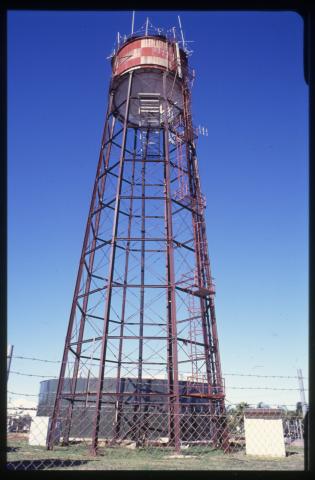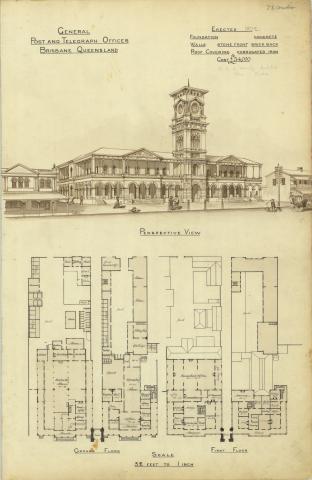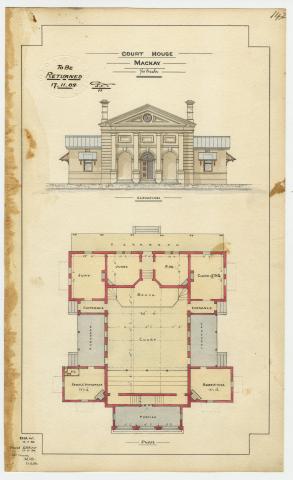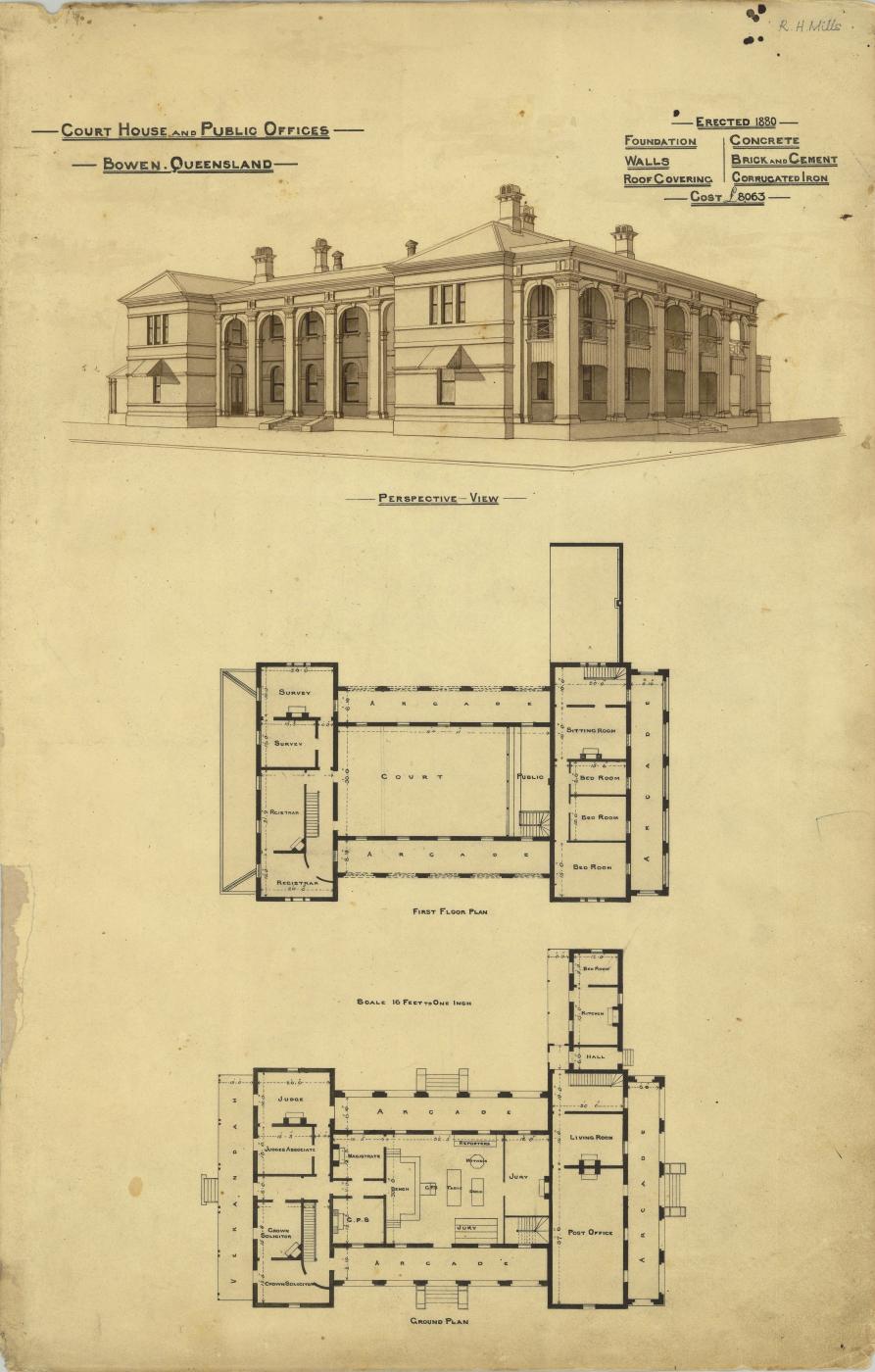
- News of the day
-
North Australian, Saturday 12 December 1863, page 3
BOWEN.
(From the Bulletin’s Correspondent.)
The following extraordinary official notification is proof positive that the inhabitants of this misgoverned township are at last placed in a queer position for want of adequate police protection:—
[TRUE COPY]
“Take Notice.— All persons are cautioned against walking about the Court-house and Lock-up Reserve after nightfall in future.
“Any person found thereon will be prosecuted according to law.
(Signed) W. Alcot Tully, J.P.
“Bowen Police Office. 12th November, 1863.”
During the last few days several men from the Peak Downs have honoured us with their presence and horse-stealing has been quite the order of the day. Three horses were taken from Mr. Wills, of the Victoria Hotel, belonging to his lodgers. To the credit of Messrs. Henry and Wills, it is highly commendable to note, that they started in pursuit of the robbers, and after an absence of five days they returned with the property and three transgressors of the law, hand-cuffed and otherwise safely secured. As our celebrated “Bowen Black Hole” is a structure of the frailest description, it was found necessary to swear in a number of townspeople to act as special constables. The above notification has been correctly copied from the original, and must as a matter of course, cause the name of Mr. Alcock Tully to he freely discussed. — Mr. T., I believe, has come here to supply the place of the late Captain Sbeaff. C.C.L.
For want of lock-up accommodation, we have two or three prisoners chained to verandah posts!!! It is of no use mincing matters. We want an efficient constabulary staff; and unless such is granted forthwith, it will not be surprising to learn of Bowen being in the possession of bushrangers. As another proof of our weak condition, I may add that the Joint Stock Bank manager has taken the precaution of having the establishment in a state of defence against any sudden attack. To carry on the public business satisfactorily, we require a responsible police magistrate and four ordinary constables, independent of the chief. Mr. Lloyd, who everybody knows has for nearly three years been the sole day and night guardian of the place will, when it is built, receive the appointment as governor of the lrag.
- Background
-
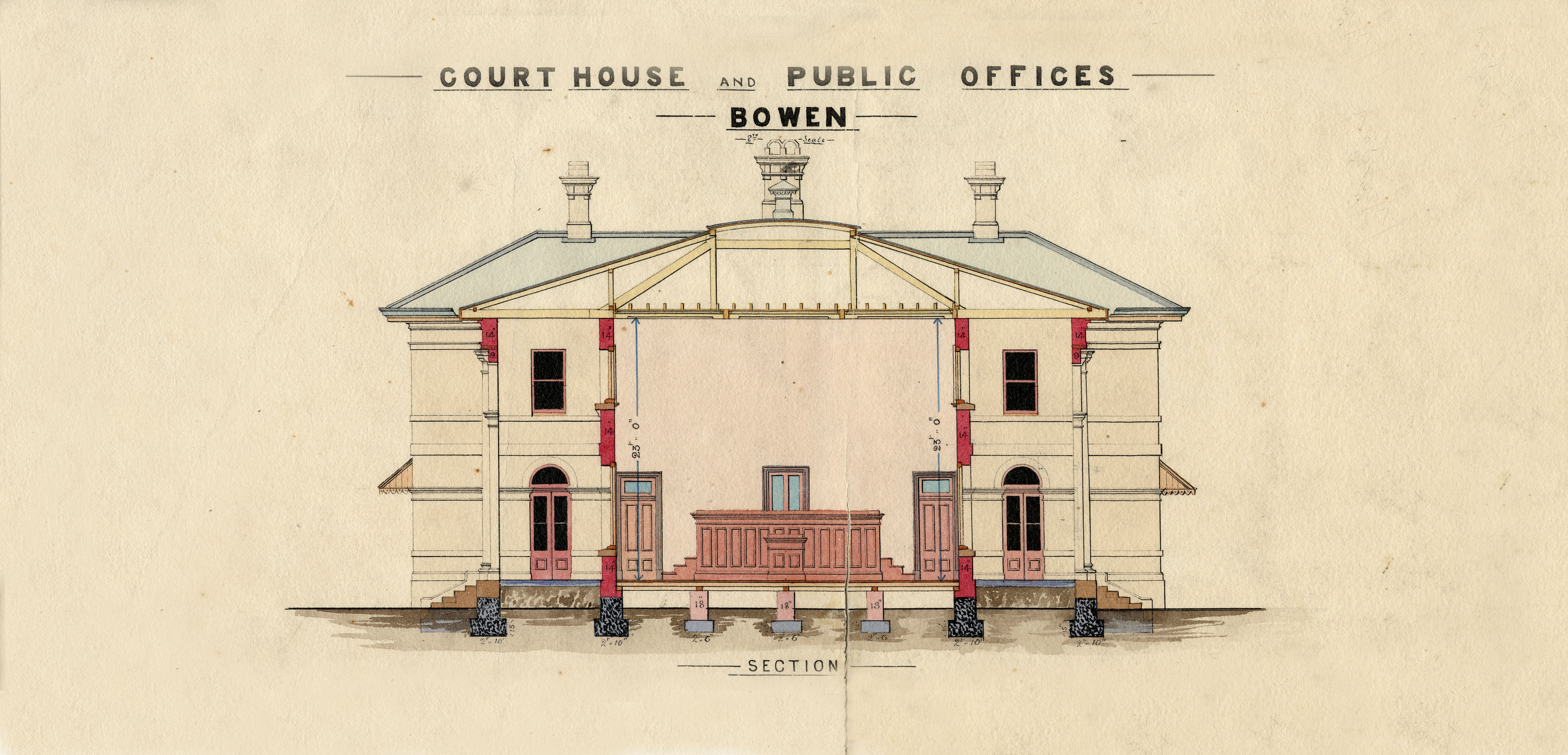
The Bowen Court House is a substantial masonry building in classical revival style, prominently located on the corner of Herbert and Williams Streets, Bowen. It was built in 1880 to house the Northern Supreme Court, the Bowen Post Office and Government Offices. Since 1899 it has functioned as a District and Magistrates court.
In Nov 1865, Bowen became a District Court area. Judge Long Innes, later to become Attorney General and Judge of the Supreme Court of NSW, was appointed as Bowen's first District Court Judge. He arrived in early 1866 and held court in the Municipal Chambers. Because of the financial crisis taking place in Queensland in 1866, the planned courthouse did not go forward and in early 1867, the judge made unauthorised changes to the Court House to improve conditions.
In 1874, recognising the rapid development of North Queensland, due largely to the discovery of gold, the Supreme Court Act increased the number of judges in Queensland to 4, of which 1 was to reside in Bowen as 'the Northern Judge'. The Bowen Supreme Court formally opened before His Honour Mr Justice Sheppard on 21 Oct 1874. The Supreme Court first sat in Townsville on 12 Feb 1875, Bowen 26 Feb 1875, and Cooktown 29 May 1876.
By May 1877, all the government buildings in Bowen had become dilapidated and it was recommended that it would be more economic in the long term, allowing for the tropical climate, to construct new buildings in masonry. The site selected for the new court was considered the best in town and plans were completed by July 1879. Presumably for reasons of economy, the new building was to house several different functions in different parts of the building. A large court room occupied the centre of the building, rising to its full height The south wing was occupied by the Post Master, the ground floor containing the office, kitchen and servant's room, and the upper floor sitting and bedrooms. The lower floor of the north wing was designed to house officials of the Supreme Court, and the upper floor was shared by the Survey and Roads offices, with bedrooms for Court Officials.
The building was designed in the Colonial Architect's office during the time when FDG Stanley was the Colonial Architect. Within the office, the design of the building is attributed to GS Connolly, who later became Colonial Architect himself. Both architects excelled in the classical revival style chosen, which was thought well suited to public buildings intended to convey a sense of stability and dignity, particularly a court which represented the power of the law. The building is on a corner site and designed so that the major street elevations each represented a separate function housed within the building; that to Herbert Street representing the Court and that to Williams Street the Post Office. The two elevations are linked stylistically by the use of arcades.
The tender of builders Southall and Tracey for £8023 was accepted and work was completed by July 1881. The old court buildings were sold in 1884. Soon after this, however, the pre-eminence of Townsville as the major town in North Queensland was recognised in the 1889 the Supreme Court Bill which provided for the appointment of a second northern judge and the relocation of the Northern Supreme Court to Townsville. This occurred on 1 December 1899, although Townsville did not have a purpose designed Court House. Since this time the Bowen Court House has functioned as a District and Magistrate's Court.
The building has remained substantially unchanged since construction, and has continued in use as a court house, but has undergone some minor additions and alterations. A verandah was added to the north-west elevation in 1913, and the balustrades and posts have been altered, however, the building is generally very intact and still has the main components of its early furniture.
Courtesy of the Queensland Heritage Register

